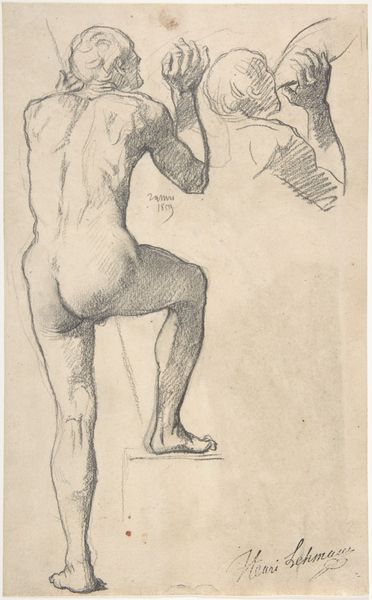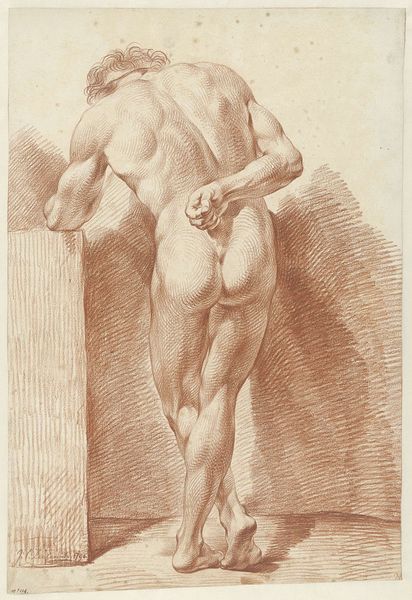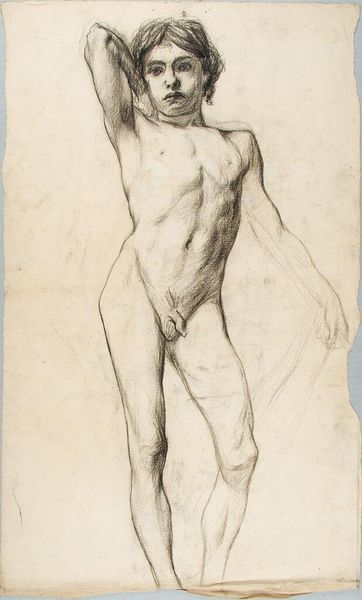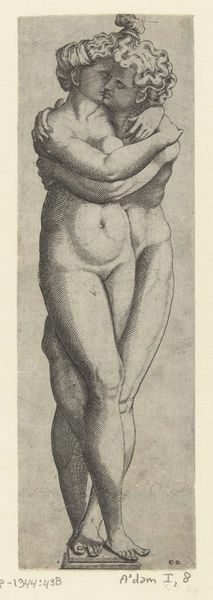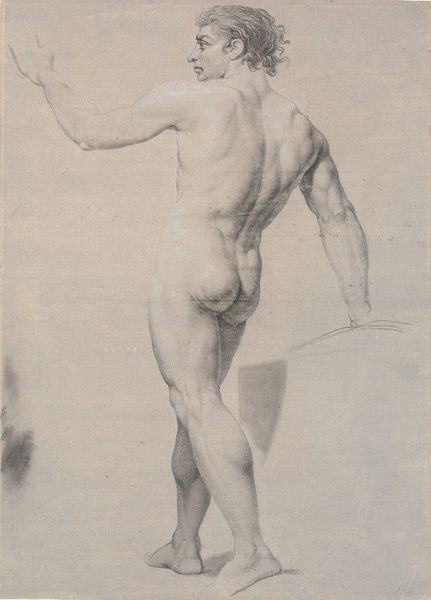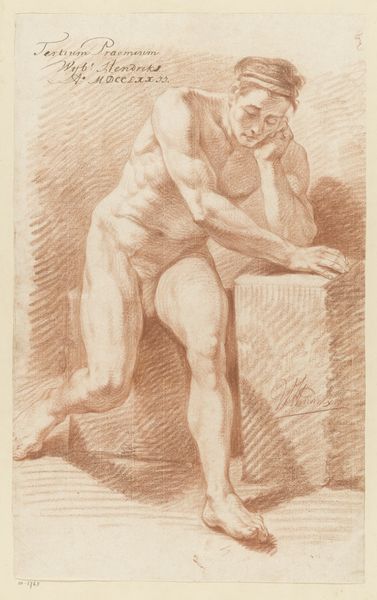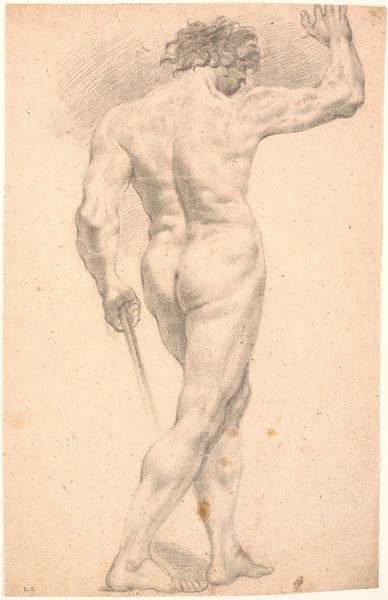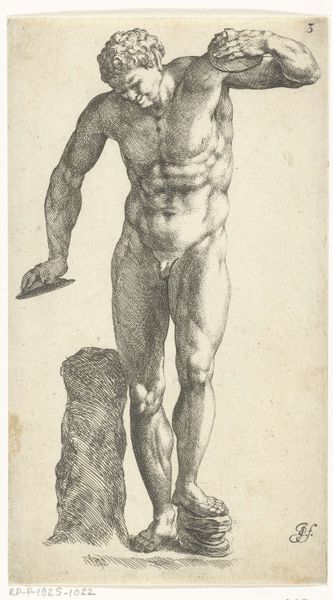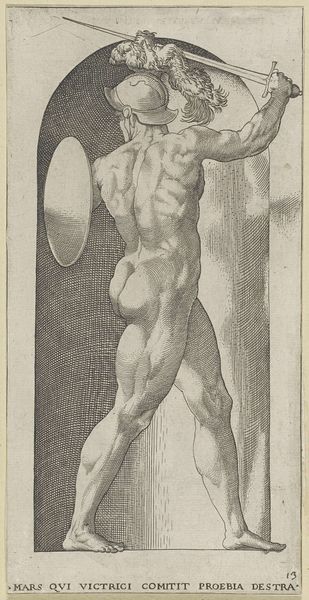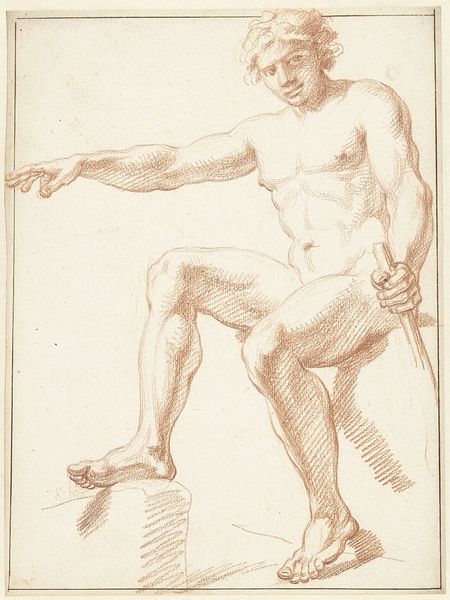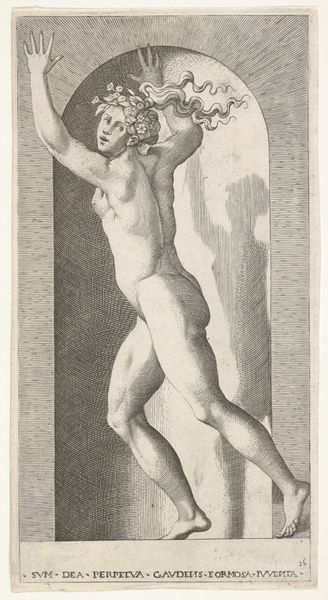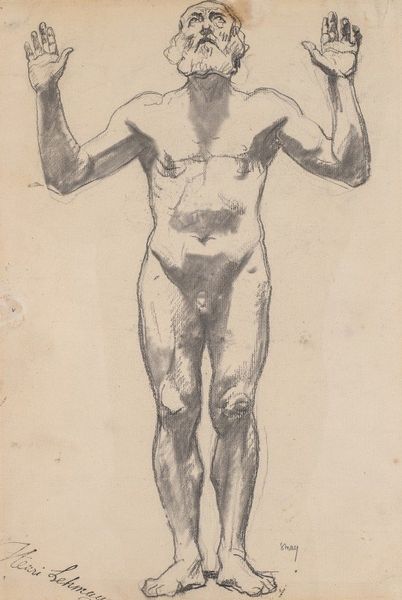
#
pencil drawn
#
amateur sketch
#
toned paper
#
light pencil work
#
pencil sketch
#
personal sketchbook
#
pencil drawing
#
pencil work
#
watercolour illustration
#
pencil art
Dimensions: height 210 mm, width 90 mm
Copyright: Rijks Museum: Open Domain
Curator: Here we have "Sater met cimbalen," or "Satyr with Cymbals," by Jan de Bisschop, dating from before 1668. It’s a pencil drawing held in the Rijksmuseum. Editor: The satyr's hunched posture, the grey-toned paper… it feels weighted, burdened. Almost tragic, despite the musical instrument we know is present. Curator: It is striking how much texture and volume de Bisschop achieves using simple pencil strokes. He focuses particularly on musculature, evident in the satyr's back. Note the contrast between the smoothness of his skin and the rough hewn, craggy stump he stands on. Editor: Yes, and it seems to deliberately juxtapose raw sensuality with constraint. The stump is this grounding, almost imprisoning force, while his body still yearns for, suggests a frenzied Dionysian existence. Are the cymbals even present, or is it merely in the title, which subtly mocks his predicament? Curator: Considering the artistic milieu of the Dutch Golden Age, and the rising merchant class who collected these works, there is an irony to it. Manual skills—the artist wielding the pencil, or even the implied labour of crafting musical instruments—was becoming commodified. The tools themselves acquired status beyond pure functionality. Editor: Exactly. How does one reconcile wild abandon, represented by the mythical satyr, with the rigid societal norms and burgeoning capitalism of the time? Perhaps this drawing explores precisely that tension—the controlled versus the uncontrolled, civilization versus nature. It is as though the artist aimed to encage what is deemed ‘Other’ during this period of increasing colonial trade. Curator: Fascinating how such a seemingly straightforward pencil sketch allows us to tease out complex considerations about materiality, labor, and social hierarchies. Editor: Absolutely, it encourages one to contemplate the social and personal negotiations individuals experienced then – ones that still resound in contemporary culture now. The artwork's emotional echo of suppression becomes haunting.
Comments
No comments
Be the first to comment and join the conversation on the ultimate creative platform.
